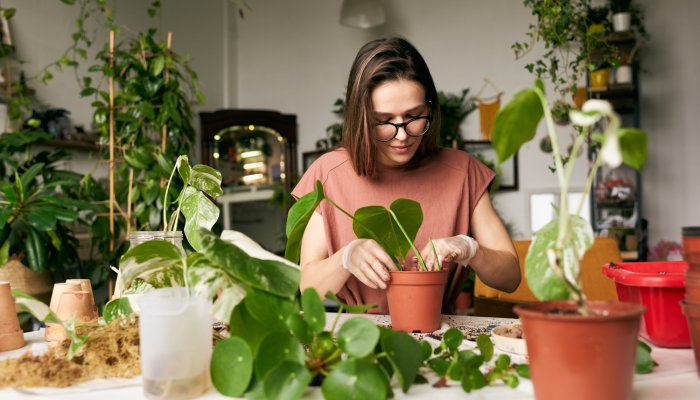

Most species of mold spores need two main components to transition into living colonies: a food source and a water source.
The organic material in plants’ potting soil offers plenty of edible options for mold spores. Dead debris, such as leaves, can also attract mold. And finally, organic particles floating around in your indoor air, such as skin cells, can also supply mold with life-giving energy.
As for moisture, plants need water to grow just as much as mold does. This can create the perfect opportunity for a spore to start growing right alongside the plant, either in its soil or on the plant itself.
When mold grows on a houseplant, it releases microscopic spores into the surrounding area. Some species also create and release microscopic toxins called mycotoxins, further increasing the number of particles in the area. As long as the mold colony is thriving, it will continue to emit these particles.
Over time, this will decrease indoor air quality as these particles are small enough to become airborne and be inhaled, ingested, and absorbed into the body. Exposure to this poor indoor air quality can trigger a long list of potential symptoms that vary based on factors such as species of mold, the presence of mycotoxins, and the health of an individual’s immune system.








